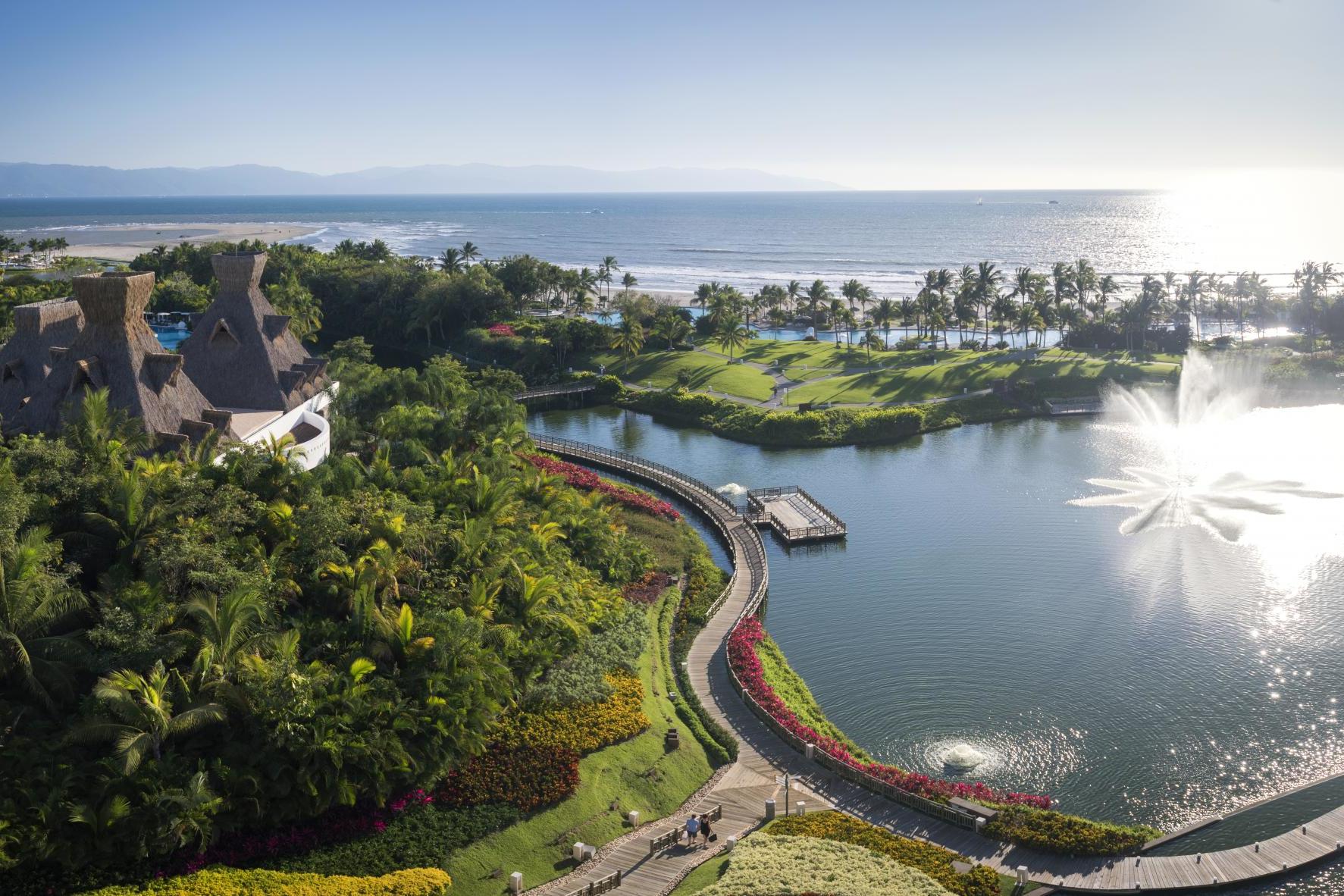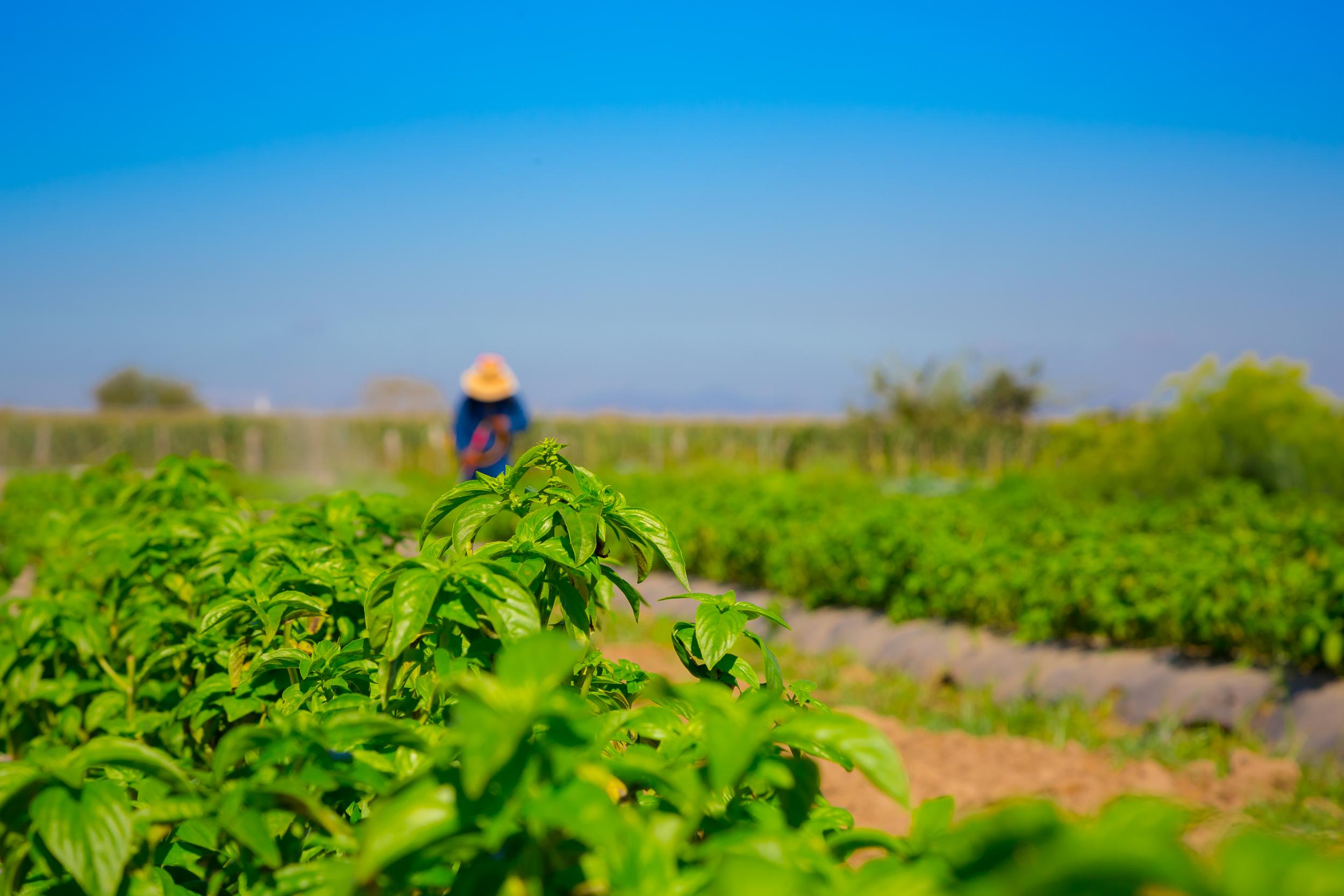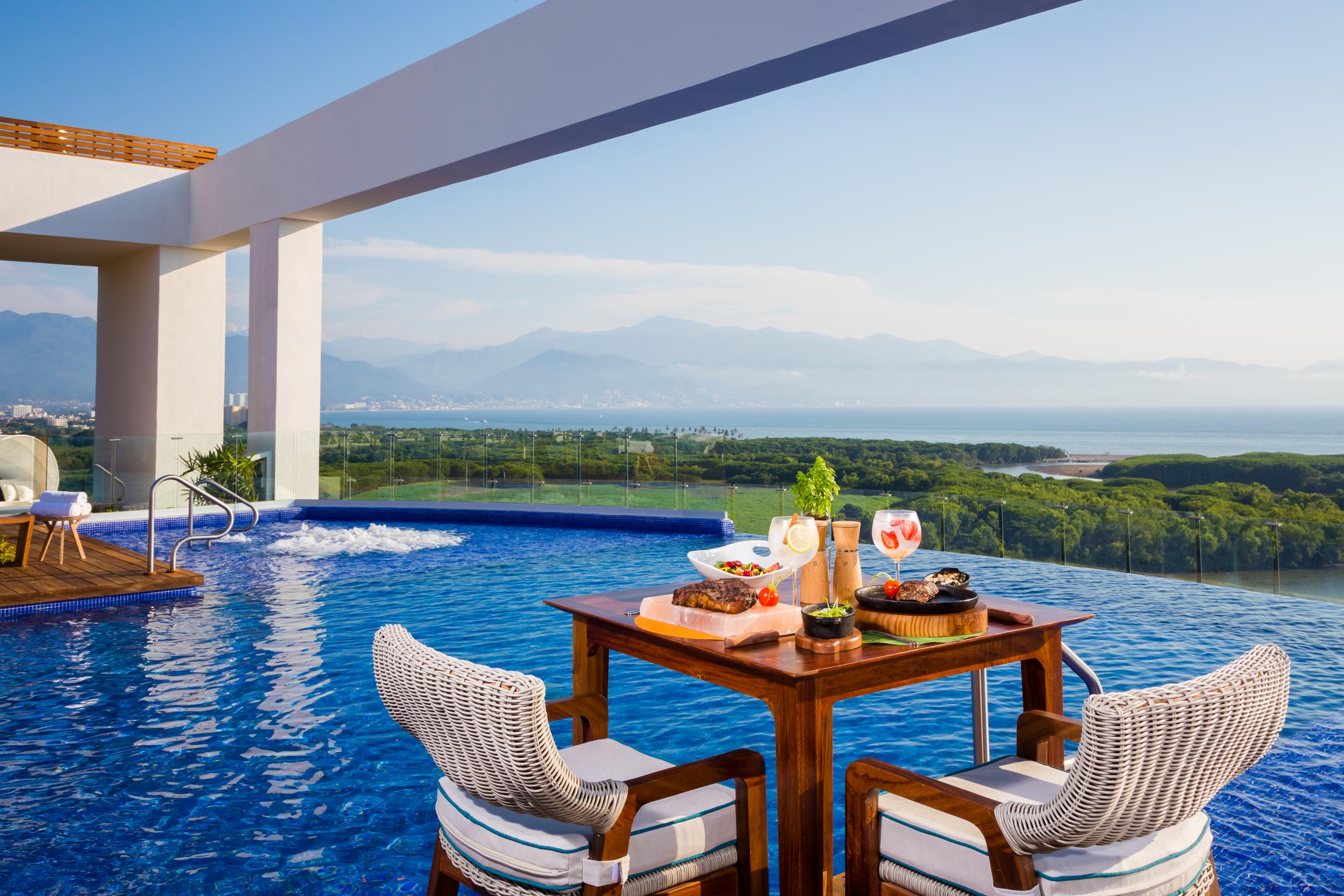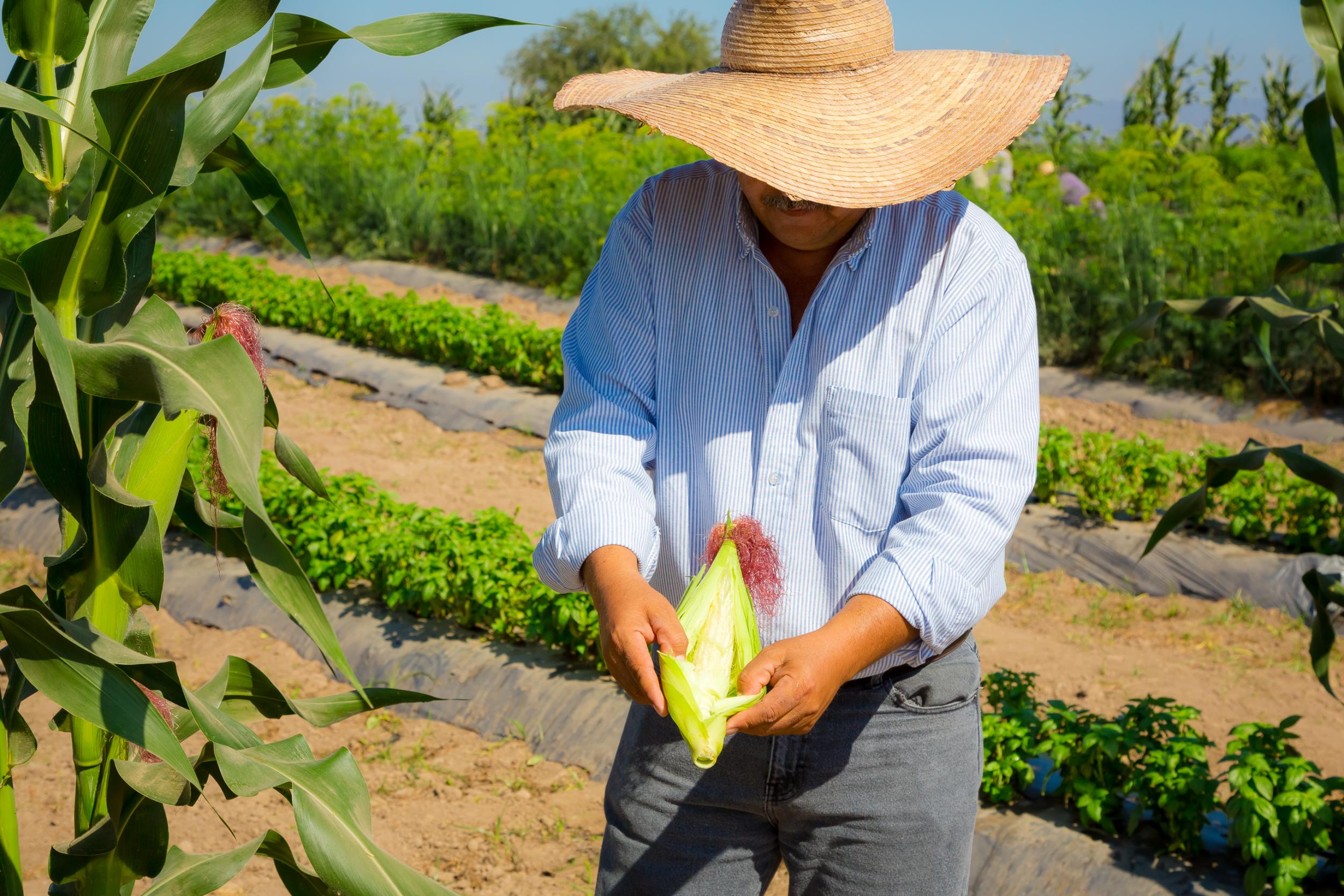Vidanta Nuevo Vallarta: How this sprawling Mexican holiday resort is trying to feed its 3,000 guests sustainably
From soil and seed to table and teeth, one Mexican resort sheds light on the massive process of feeding its guests

Your support helps us to tell the story
From reproductive rights to climate change to Big Tech, The Independent is on the ground when the story is developing. Whether it's investigating the financials of Elon Musk's pro-Trump PAC or producing our latest documentary, 'The A Word', which shines a light on the American women fighting for reproductive rights, we know how important it is to parse out the facts from the messaging.
At such a critical moment in US history, we need reporters on the ground. Your donation allows us to keep sending journalists to speak to both sides of the story.
The Independent is trusted by Americans across the entire political spectrum. And unlike many other quality news outlets, we choose not to lock Americans out of our reporting and analysis with paywalls. We believe quality journalism should be available to everyone, paid for by those who can afford it.
Your support makes all the difference.Vidanta Nuevo Vallarta resort, just north of Puerto Vallarta on the west side of Mexico, is a sprawling vista of lush riverbeds peppered with impeccable landscaping of indigenous plant life. The half-dozen hotels on the property – connected via miles of wood-decked paths – provide luxury accommodation to more than 3,000 mostly American and Mexican guests.
Last December, Vidanta began a regulated farm on the same property just 15 minutes up the Ameca River. Almaverde, which translates as “Green Soul”, will be the largest hotel-sustaining proprietary farm in Mexico by the end of the year, when it will have grown to 50 acres.
While this is by no means the first sustainable farm-to-table operation in Mexico, nothing has been done on this scale before. Vidanta is a huge operation – the kind of place that would normally be considered a drain on resources. But a few years ago, the family who own the establishment made sure they got in at the ground level of sustainable upkeep, with Almaverde as the latest iteration of those goals.
Last spring I went to see Almaverde for myself, relishing in the chance to touch the soil, taste tomatoes off the vine, speak with the head agronomist and sit at restaurant tables while world-class chefs served me salads made from their own crops. Ultimately, I learnt what it really takes to run an operation of this size sustainably and why it’s an important feat that other resorts should take heed of.
Let’s get sustainable
Vidanta’s desire to provide the best experiences to its guests meant it was a natural progression to move into sustainable farming to supply its own restaurants, markets and employee cafeterias with the best possible produce. With Almaverde, the resort is learning that sustainability and taste go hand in hand; its chefs can work with the agricultural engineers to build an exciting and fresh menu, while reducing the hotels’ overall carbon footprint.
Not-so-risky business
While weather can be temperamental and natural disasters are worryingly frequent, Vidanta has suppliers on call to order from should the need arise. The typical farming steps are crop selection, land prep, seed selection and then seed sowing, irrigation and growing, fertilisation and, finally, harvesting. The interesting thing about Almaverde is that all the steps are constantly being done in correspondence to what the expected demand for each product will be for Vidanta. They harvest based on what the resort needs; the goal is to be fully self-sustaining for all products that can be grown locally (apples, avocados and other cold climate products will still need to be purchased from suppliers).

Growing goals
Through analysis of the resort’s historical produce purchases, the type of produce that can be grown in the region, and expected weekly occupancy rates, a harvest calendar is planned and shared throughout the resort. “To begin with, seeds are planted in trays in the greenhouse,” says Nayarit local and agronomist engineer Alfredo Ruiz. “Then each seedling is planted in rows in the field with drip irrigation and the appropriate sun cover, tended to by hand and harvested by hand to best care for the crop. This process is constantly being repeated at all levels in order to be able to harvest the necessary produce continuously as per the harvest calendar. The crop residues are later used to regenerate the soil.”
A chain of communication
Executive chef Gerardo Iriarte works out his plan for food requirements based on expected reservations and the seasonality of the menu he is planning, Nicholas Wiedemann, director general of Vidanta Energy, explains to me. “He has regular conversations with the head agronomist [Ruiz] regarding harvest schedules to plan what will need to be supplied by third parties, if anything,” says Wiedemann.

Those conversations are focused on the quality of the produce and expected versus actual harvest, as well as flexibility of deliveries. Each week, Ruiz and Iriarte have a meeting where they plan production, discussing the various amounts of fruits and vegetables that are needed in the kitchen. Almaverde currently consists of seven hectares (just over 17 acres), harvesting over a ton of produce per day, which includes 67 varieties of fruit and vegetables. By the end of the year, Vidanta projects it will have upped this to 80 varieties.
Food feedback
“For chefs to have their own vegetable garden has been a very important project,” says Iriarte, who has 29 years of experience in the hotel and restaurant industry. “Our growth in learning is very important; to have fresh products of high quality allows us to be creative and modify our menus at any time.”

Travel essentials
Getting there
Vidanta Nuevo Vallarta is approximately 10 minutes’ drive from the Puerto Vallarta International airport, located just across the Ameca River from Puerto Vallarta. Aeromexico (world.aeromexico.com) flies from London Heathrow to Puerto Vallarta with a stopover in Mexico City from £559 return.
Find flights to Puerto Vallarta
Staying there
Vidanta Nuevo Vallarta resort has a range of accommodation options. From $350 (£260) for a master room with two double beds, room only.
More information
Join our commenting forum
Join thought-provoking conversations, follow other Independent readers and see their replies
Comments